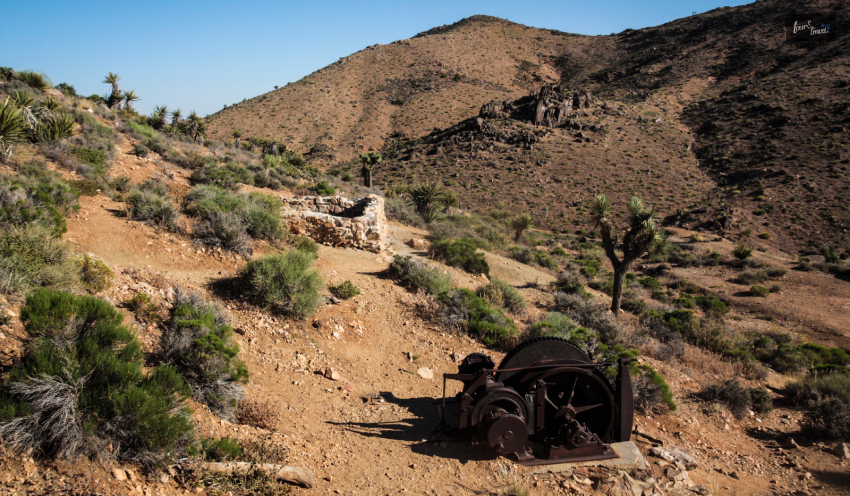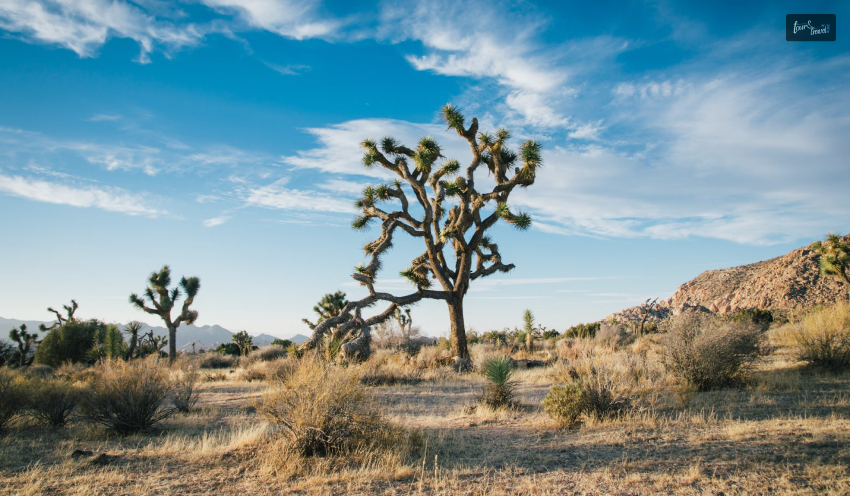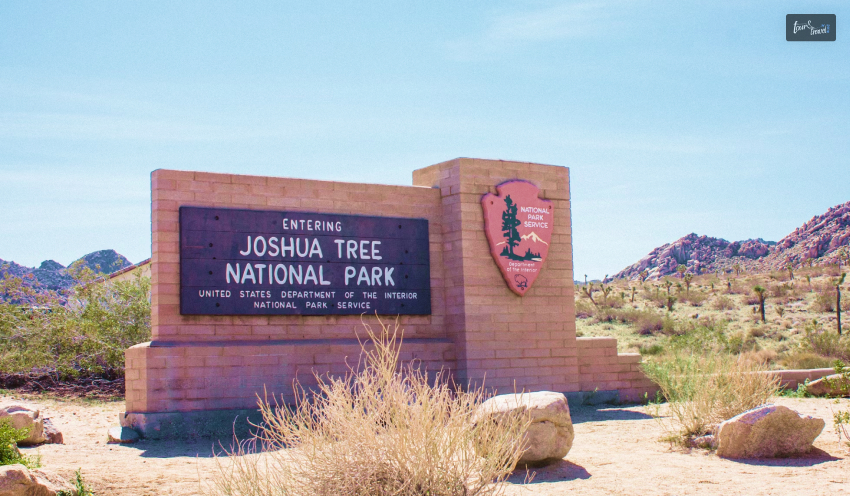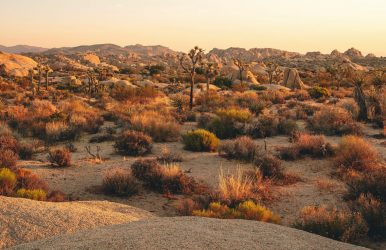Visit Joshua Tree National Park To Hike And Explore The Best Trails
BY Sibashree Aug 20, 2024
Joshua Tree National Park, named after the crooked Joshua trees, is known for its endless hiking trails and desert ecosystems of the lower Colorado Desert and the Mojave Desert. Further, the Joshua Tree is one of the few national parks in the USA to offer equally amazing daytime and nighttime experiences. The geology of Joshua Tree is “interesting.” You will find Arch Rock and many other fascinating rock formations in the park. Wind power, erosion, and different weather forces have created many other spectacularly-formed rocks and other sculptures. Hiking is the best way to cherish the beauty and splendor of this national park to the fullest. So, let’s know the tales from the trails! Best Hiking Trails in Joshua Tree National Park Joshua Tree had an impressive 3,270,404 visitors in 2023, and hiking is one of the most popular activities in this park. Home to some of the best hikes in the USA, Joshua Tree also has many trails for kids and beginners. Further, you can explore various short walking routes and nature trails like Bajada, Oasis of Mara, and Barker Dam in this park. Here, I have curated some amazing hiking trails in the park across various difficulty levels. Joshua Tree Hikes (Easy) The easy hiking trails in Joshua Tree are accessible in all seasons. To make the most of your hiking expeditions, you must start by 9 am in the morning. Cholla Cactus Garden The Cholla Cactus Garden trek is easy, and even kids can explore it. It will take just 15 minutes to get completed. You will find the trailhead 20 miles north of Cottonwood Visitor Center. As you can guess from its name, the trail is named after the growing cholla cacti found in abundance here. Wear full-length clothes and closed-toe shoes and follow the trail to avoid getting hurt by the cactus thorns. Discovery Trail You can start hiking this trail from the Skull Rock parking area. This easy hike will take you around 30 to 40 minutes. Catch a glimpse of the desert washes and boulders throughout the route. Skull Rock View this post on Instagram A post shared by Joshua Tree National Park (@joshuatreenps) Start hiking this trail early in the morning from the Jumbo Rocks Campground. You can even take the trailhead from the Skull Rock parking area, which is east of the Jumbo Rocks Campground. Skull Rock is one of the many unique rock formations you will see in the park, and it’s the highlight of this trekking route. You can cover the trekking route within just one or two hours. A night-time view of the Skull Rock can offer you the perfect Halloween experience! Moderate Hiking Trails Like the Channel Islands National Park and the Death Valley National Park, the Joshua Tree also has many moderate hiking trails. Here is a brief overview of some of the most amazing moderate Joshua Tree hiking trails. Hi-View The Hi-View trail, starting from the Northwest of Black Rock Campground, will require you to hike for at least an hour. However, based on the weather conditions, you may also need to walk for more than 1 hour and 45 minutes. Once you reach the top of the steep ridges, you can enjoy a panoramic view of the entire park. Further, the iconic Joshua trees are found in the steeper sections of this trail. If you feel tired in the course of your trekking, you can catch some rest on the benches across the park. Mastodon Peak The Mastodon Peak trail starts from the Cottonwood Spring parking area, and here, you will experience an elevation change of 175 feet. To reach the granite mountain peak, you will have to pass through a rugged terrain. You can complete the entire trek within 1.5 to 3 hours. Split Rock Loop The Split Rock picnic area is the starting point for hiking this trail of 2.5 miles. You can complete the trek within two and a half hours. However, if you are a seasoned hiker, you can complete the safe route within 1 and a half hours. On a spur trail of the Split Rock Loop, you will find a rock formation that looks like the profile of a human face. It is called the Face Rock. Pine City Go to the end of the Desert Queen Mine Road to find the trailhead of Pine City. The dense vegetation of junipers and pinyon makes this 4 miles long trail picturesque. It will take around 3 hours to complete the hike. Strenuous Hiking Trails These strenuous trails are not suitable for summer hiking. You can try conquering them in autumn and spring. California Riding and Hiking Trail Stretching over 36.6 miles, the California Riding and Hiking Trail is a two-day long hike. If the weather conditions are unpleasant, the total duration of the hike can stretch up to three days. As you hike the route from Black Rock Canyon to the park’s North Entrance, the amazing landscape of the Mojave Desert will charm you. Ryan Mountain Hiking to the summit of Ryan Mountain is one of the most popular activities to do in Joshua Tree National Park. The trekking route has an elevation of 1,050 feet, and it stretches over 3 miles. Despite being strenuous, this trail can be hiked in 2.5 hours. So, it is one of the most popular hiking trails in the park. Willow Hole At the end of the Willow Hole trail, you will find the amazing willow trees. You can start hiking from the Boy Scout Trailhead located inside the park at the South end. The sandy washes, Joshua tree vegetation, and famous boulder landscape make the trail amazing. Short Walks And Nature Trails In Joshua Tree National Park View this post on Instagram A post shared by Joshua Tree National Park (@joshuatreenps) The short walks and nature trails of Joshua Tree are available for year-long hiking. These trails also have wheelchair facilities, offering the most inclusive experience to visitors. It’s time to be familiar with some of these amazing nature walk trails. Oasis of Mara (Oasis of Mara is the only trail in Joshua Tree that allows dogs. So, hiking this trail is surely one of the best things to do in Joshua Tree as a pet lover.) Arch Rock Barker Dam Ryan Ranch Bajada Among these short walks and nature hiking trails, Cottonwood Spring is the shortest. You can finish the trail within just 10 minutes. Enjoy the view of cottonwood trees as you take a walk to the fan palm oasis. Integratron: The Wonder Of The Joshua Tree National Park Facts to Know Integratron is four stories high.Its diameter is 55 feet.It’s a 16-sided metal-free building.The construction technique used in it is called joinery.No nails or screws are used in the construction.It is made of non-ferromagnetic materials. George Van Tassel said that Nikola Tesla’s writings influenced the structure of Integratron. The western half of the Joshua Tree National Park is on the Mojave Desert’s southern tip. UFOlogist George Van Tassel built “a time machine for basic research on rejuvenation, anti-gravity, and time travel” in the Mojave Desert in the 1950s. This is a place where visitors are offered sound therapy that is believed to have the power to rejuvenate living tissues in human beings. From the time it was built, this place has attracted reporters, visitors, artists, and spiritual minds. George Van Tasse chose the Mojave Desert for building Integratron as, according to him, this place had a connection to the Great Pyramids in Giza. The proximity to magnetic vortices was another reason for choosing the site. Final Words: Schedule Your Hike Right March to May and October to November are the two best seasons for hiking in Joshua Tree. The park remains open throughout the year. However, the scorching and dry summer makes hiking impossible on many moderate and strenuous trails. During summer, the daytime temperature of the park reaches around 100 degrees F, and the temperature falls to 75 degrees F at night. Further, if you visit the park between March and May, you will see the wildflowers blooming. Also, in April, you can celebrate the National Park Week here. In October, there are important events in the park, such as the Joshua Tree Music Festival and Pioneer Days. The temperature is also pleasant in the fall season, recording an average temperature of 80 degrees F and 50 degrees F at day and night. So, plan your visit to Joshua Tree right and share your travel stories with us as you return with the most amazing hiking experience. Joshua Tree National Park FAQs Is It Safe To Visit Joshua Tree At Night? Yes, it is safe to visit Joshua Tree at night. In fact, stargazing is one of the most popular activities in this national park. The roads in the park are marked, and there is strict patrolling on all roads. However, this desert park is an important preservation hub for vulnerable ecosystems. Also, there are snakes and scorpions in the park. So, camp in the park or explore it at night as a responsible visitor. It is safer to restrict your movements near the campsites at night. Is Joshua Tree Worth Seeing? Yes, Joshua Tree is worth seeing, as you can hike through the California Riding and Hiking Trail, Pine City, Bajada, and many other amazing trails. As you explore these routes, you will come across a wide variety of flora and fauna. Further, the Joshua Tree is an important preservation and conservation center for fragile ecosystems. In addition, this is a place where stargazing is an ultimate immersive experience. Other highlights of your trip to this national park will be exploring the Penguin Rock, Arch Rock, and other iconic rock formations. Moreover, indulge in a sound bath at the Integratron. Built by UFOlogist George Van Tassel, this dome-shaped place offers sound therapy that promises to rejuvenate living human cell tissues. Can You Sleep Inside Joshua Tree? Yes, you can sleep inside Joshua Tree, as there are nine campgrounds inside the park. The Hidden Valley, Belle, and White Tank campsites are available on a first-come, first-serve basis. However, White Tank and Belle campsites can remain temporarily closed during summer. For the India Cove, Ryan, Cottonwood, Jumbo Rocks, and Black Rock campsites, you will need to make a prior booking. In addition, you can try backcountry camping and consider putting up a tent in the campsites outside the park. Remember, there are no restaurants and modern lodging facilities inside the park. Can You See Milky Way From Joshua Tree? The International Dark-Sky Association, or IDA, has identified Joshua Tree as an International Dark Sky Park. You can get the best view of the Milky Way here. Joshua Tree also has the darkest nights in Southern California. So, you will get to see the passing meteors, stars, and planets from this national park. Stargazing from any part of the park is an amazing experience. However, there are also four designated stargazing spots in the park. These are: Quail Springs parking lot Hidden Valley parking lot Cap Rock parking lot Ryan Mountain parking lot Further, you can put up tents at one of the nine camping grounds, and among them, the Cottonwood Campground demands a special mention. Also read Why Include Whale Watching In Your LA Itinerary. Traveling On A Budget: Tips For Affordable Adventures. Be Soothed And Meet History At Hot Springs National Park.

















